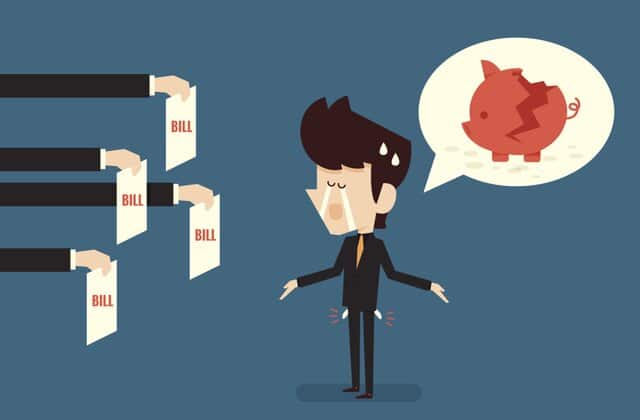Setting limits to avoid overspending

Managing your finances wisely is essential in today's economy, particularly when it comes to the use of credit cards. Setting credit card limits is not just about sticking to a budget; it's about ensuring financial stability and peace of mind.
This guide will walk you through the necessary steps to set appropriate boundaries on your spending by utilizing credit card limits effectively. By doing so, you can safeguard yourself from the pitfalls of overspending and the stress associated with debt accumulation.
Here, we delve into strategies for establishing and maintaining these limits, helping you to achieve a balanced and financially secure lifestyle.
Understanding the Importance of Credit Card Limits
Credit card limits play a pivotal role in managing personal finances. They serve as a built-in mechanism to prevent excessive spending. However, the true potential of these limits is realized only when they are adapted to fit individual financial situations and goals.
Recognizing the difference between the credit limit provided by your bank and the self-imposed limit based on your budget is crucial. The latter ensures that you remain within a spending range that is comfortable and sustainable for you.
Adjusting your spending limit according to your financial objectives and income changes ensures that you are always in control of your expenditures and not the other way around.
Consistently monitoring your spending habits and staying within your set limits will help in building a good credit score, ultimately giving you better leverage in financial dealings.
Setting Your Own Credit Card Limits
While banks set your credit card's maximum limit, you have the power to define your own spending limit. Start by reviewing your monthly income, expenses, and financial goals.
Establish a limit that is significantly lower than your maximum credit line. This practice reduces the likelihood of accumulating debt and helps in maintaining a healthy credit utilization ratio.
Use financial tools or budgeting apps to track your credit card spending in real time. Many apps offer the option to set alerts when you’re approaching your self-imposed limit.
Reassess your limits regularly to reflect changes in your financial situation, ensuring that your spending habits align with your current goals and responsibilities.
Automating to Stay Within Limits
Use technology to your advantage by setting up automatic alerts for when you're nearing your self-imposed spending cap. This can prevent unintentional overspending.
Automatic payments can also be a boon, ensuring that you pay your credit card bill on time and possibly pay off the balance in full each month. This strategy prevents interest charges from piling up and helps maintain your set limits.
Consider linking your credit card to budgeting software that categorizes your expenses. Monitoring categories help in identifying areas where you might be consistently overspending.
Dealing with the Challenges
Adhering to your credit card limits requires discipline and can sometimes be challenging. Unexpected expenses may arise, necessitating a temporary adjustment of your limits.
In such cases, it's important to adjust your spending in other areas to compensate, rather than resorting to increasing your limit. This may involve prioritizing expenses, delaying non-essential purchases, or finding additional income sources.
Remember, the goal is to stay within a healthy spending range, not to restrict your financial freedom. It’s about making informed choices that align with your long-term financial health.
Benefits of Maintaining Credit Card Limits
Maintaining strict limits on your credit card spending can yield numerous benefits. It not only helps in avoiding debt but also in saving money that would otherwise go towards interest and fees.
By staying within limits, you demonstrate responsible credit behavior, which can positively impact your credit score. A higher credit score may lead to better rates on loans and other financial products.
Setting and maintaining these limits also instills a sense of financial discipline, empowering you to make more informed and deliberate spending decisions.
{FAQ}
{FAQ_ITEM}
{FAQ_TITULO}Why is setting your own credit card limit important?{/FAQ_TITULO}
{FAQ_CONTEUDO}Setting your own credit card limit is important as it helps in avoiding overspending, reducing the risk of debt accumulation, and maintaining a healthy credit score. It ensures that your spending aligns with your financial goals and income.{/FAQ_CONTEUDO}
{/FAQ_ITEM}
{FAQ_ITEM}
{FAQ_TITULO}How often should you reassess your credit card spending limit?{/FAQ_TITULO}
{FAQ_CONTEUDO}You should reassess your credit card spending limit regularly, ideally every few months or whenever there's a significant change in your financial situation, such as a change in income, expenses, or financial goals.{/FAQ_CONTEUDO}
{/FAQ_ITEM}
{FAQ_ITEM}
{FAQ_TITULO}What to do if you consistently exceed your credit card limit?{/FAQ_TITULO}
{FAQ_CONTEUDO}If you consistently exceed your credit card limit, it's crucial to reassess your spending habits and budget. You may need to set a lower spending limit, prioritize your expenses, or find ways to increase your income to better align your spending with your financial capacity and goals.{/FAQ_CONTEUDO}
{/FAQ_ITEM}
{/FAQ}
Embracing Your Financial Freedom
Setting and adhering to credit card limits is a crucial step in managing your finances and avoiding the pitfalls of debt. By taking control of your spending, you empower yourself to achieve financial stability and peace of mind.
Remember, these limits are not meant to hinder your lifestyle but to enhance your financial well-being by promoting responsible spending habits. The freedom and security that come from managing your money wisely are invaluable.
Start today by setting your limits and make informed decisions that will pave the way for a brighter, more secure financial future.
Financial discipline is not just about restriction; it's a pathway to achieving your dreams without the burden of financial stress. Embrace it.

Related